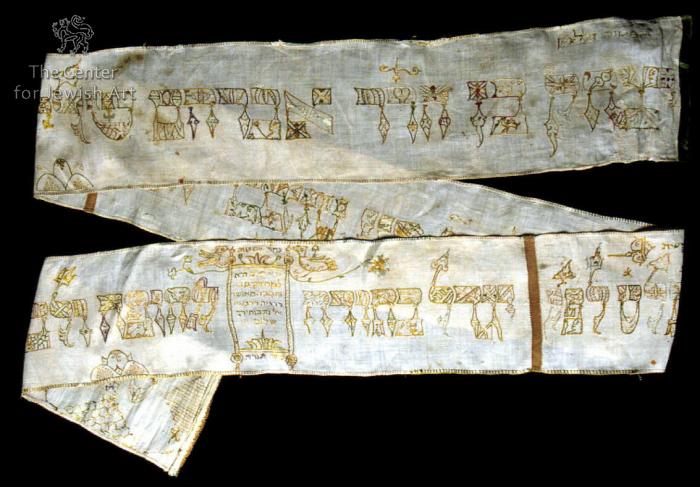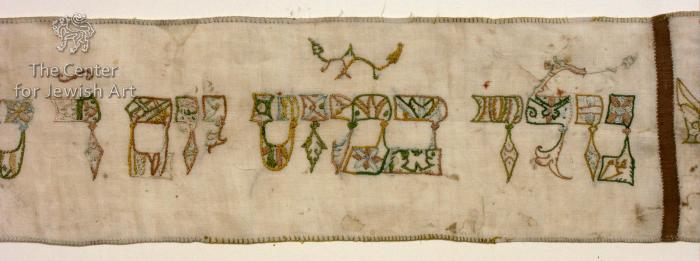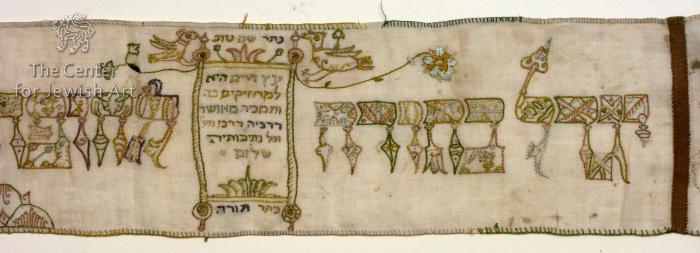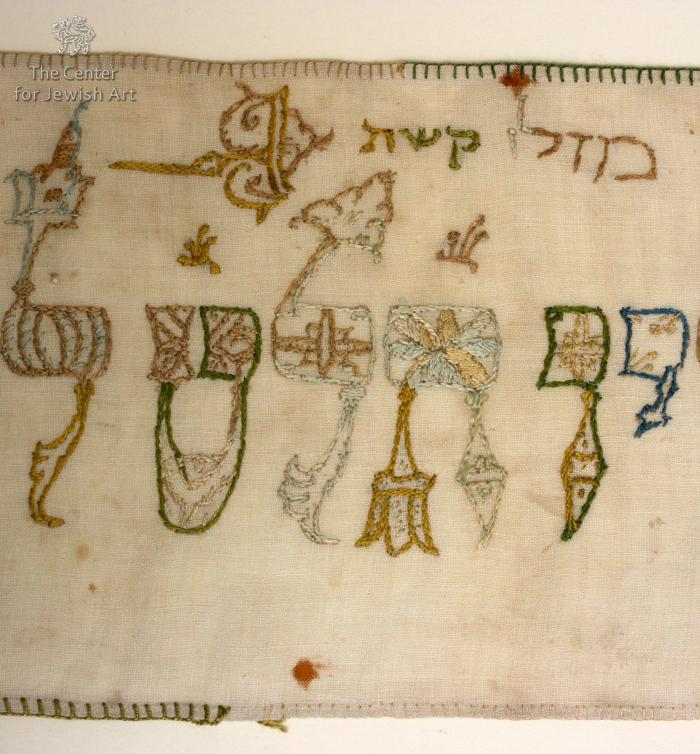Obj. ID: 39260 Wimple (Torah binder), Germany, 1678

sub-set tree:
The following description was prepared by William Gross:
The custom of the Wimpel or Torah Binder stretches back some 500 years at least in the world of classic Ashkenaz, the German speaking lands. The cloth which held the child at the time of his circumcision, almost always of linen, was cut into strips and sewn into a long textile. On this lengthy cloth was embroidered or painted a formulaic inscription, blessing the child and wishing that he grow up to "the Torah, the Chupah and good deeds". The beginnings of the custom were executed on linen cloth with silk embroidery. In the late 18th century the custom passed to painting on the textile with substantial illustration, although late examples of embroidered Wimpels do exist. Wimpels in the Gross Family Collection have their origin from Germany, Denmark, the Czech lands, Luxembourg and Alsace. The Wimpel served as a Torah Binder, being brought to the synagogue for use on the child's first birthday, his Bar Mitzvah and the Shabbat Chatan before his marriage.
This example is one of two in the Gross Family Collection in which the four sections of the binder are connected by strips of silk fabrics rather than being directly sewn together. The hollow letters are filled with decoration and a Torah scroll is depicted, open with the inscription of the prayer "Etz Chayim Hi..." embroidered on it. This piece is a transitional one in which the decoration becomes more prominent in the making of the binder, evolving from the simpler binders of the earlier 17th century. This sort of 17th-century well decorated Wimpel is extremely rare.
Inscription: Yitzhak ben Avraham












